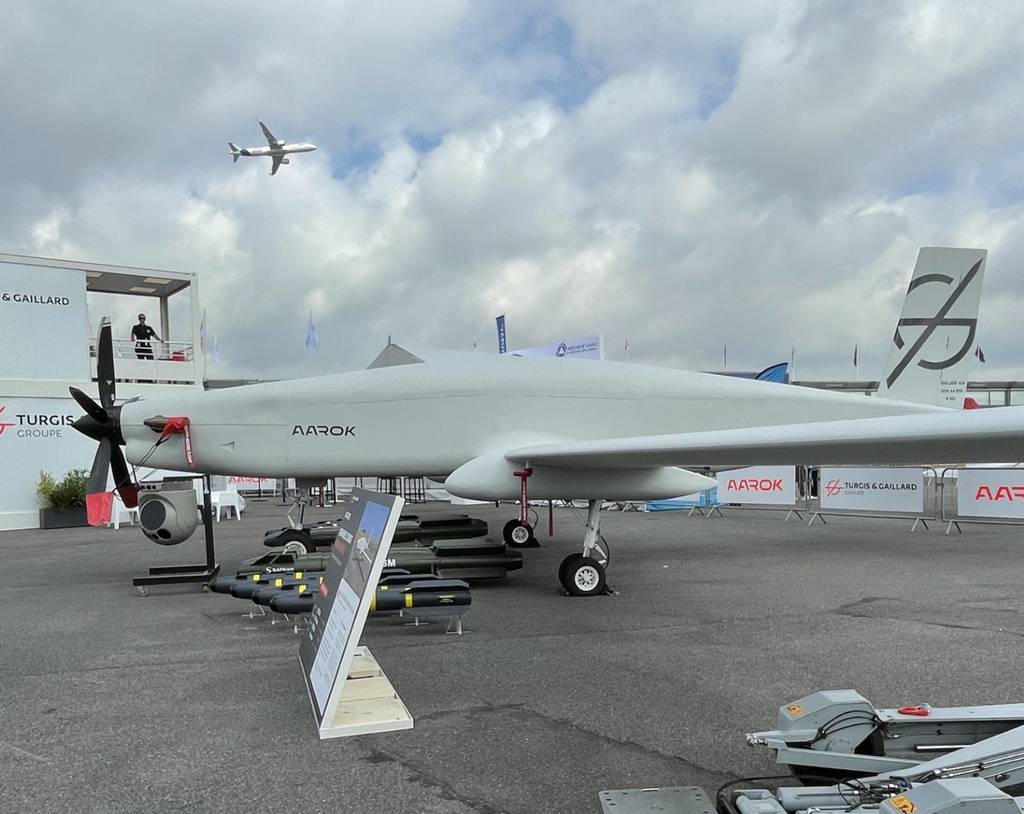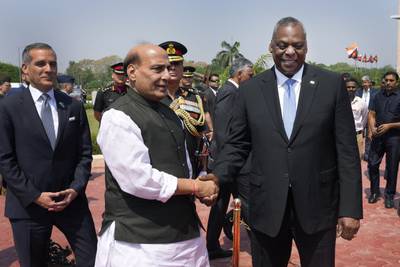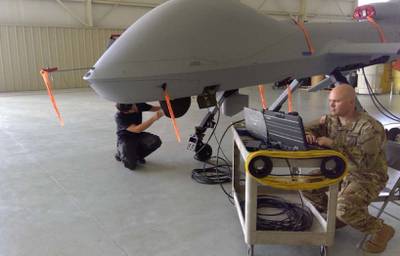PARIS — The reveal of a French-made unmanned aerial system at the Paris Air Show here has sparked a debate across the drone industry regarding the extent to which it will compete with same-category systems like the notional Eurodrone and the U.S.-made MQ-9 Reaper.
The Aarok is a medium-altitude, long-endurance (MALE) combat drone, designed and made in France by Turgis & Gaillard.
Its development began three years ago, although its capabilities were only disclosed for the first time over the last week. The system is envisioned to carry up to 6,000 lbs (3,000 kilograms) of payload and fly for up to 24 hours. It is powered by a PT6 turboprop engine from Pratt & Whitney Canada. According to the company, the Aarok is designed to carry out a wide range of missions, including strike operations, land and maritime surveillance and anti-submarine warfare.
Because of its reported capabilities and size, the Aarok has earned several comparisons by the French press to the U.S. MQ-9 Reaper drone that the French military already operates. The newcomer is 3 feet larger than the American system, with a 72-foot wingspan, but their differences seemingly do not stop there.
“It is clear that the Reaper has created a tremendous benchmark you have to meet for entry into a very competitive market,” C. Mark Brinkley, senior director of strategic communications at General Atomics Aeronautical Systems (GA-ASI), told Defense News. “If you’re coming in 20 years later with your own version, you have to earn your experience.”
Brinkley added that it is too early to tell what the Aarok drone can actually do or how it performs, as it has not yet flown. The French company has said that it is hopeful that the system will fly for the first time before the end of this year. In contrast, the MQ-9A Reaper has already logged more than four million flying hours, according to the manufacturer.
Marketed as the first European MALE drone at the show, the Aarok was shown next to four AASM Hammer precision-guided munitions produced by Safran, which can be the drone’s armament.
The arrival of the prototype has raised many questions regarding how it hopes to coexist with the multinational Eurodrone project. Last year, France re-stated its intention to acquire a total of six systems, four of which have already been ordered. The goal is that the French Eurodrones will gradually replace the Reapers currently in operation within the military and set to be retired after 2030.
Turgis & Gaillard declined to comment on which customers it hopes to sell the Aarok to.
The Eurodrone initiative has faced considerable delays over the years and is currently not supposed to enter into service before 2030. When contacted, an Airbus official said that there was no comment from their side on the Aarok at this time.
As for GA-ASI, Brinkley said that while the company sees new competition as a source of innovation and welcomes it, the company nonetheless “owns this category of platforms and isn’t going anywhere.”
Elisabeth Gosselin-Malo is a Europe correspondent for Defense News. She covers a wide range of topics related to military procurement and international security, and specializes in reporting on the aviation sector. She is based in Milan, Italy.








